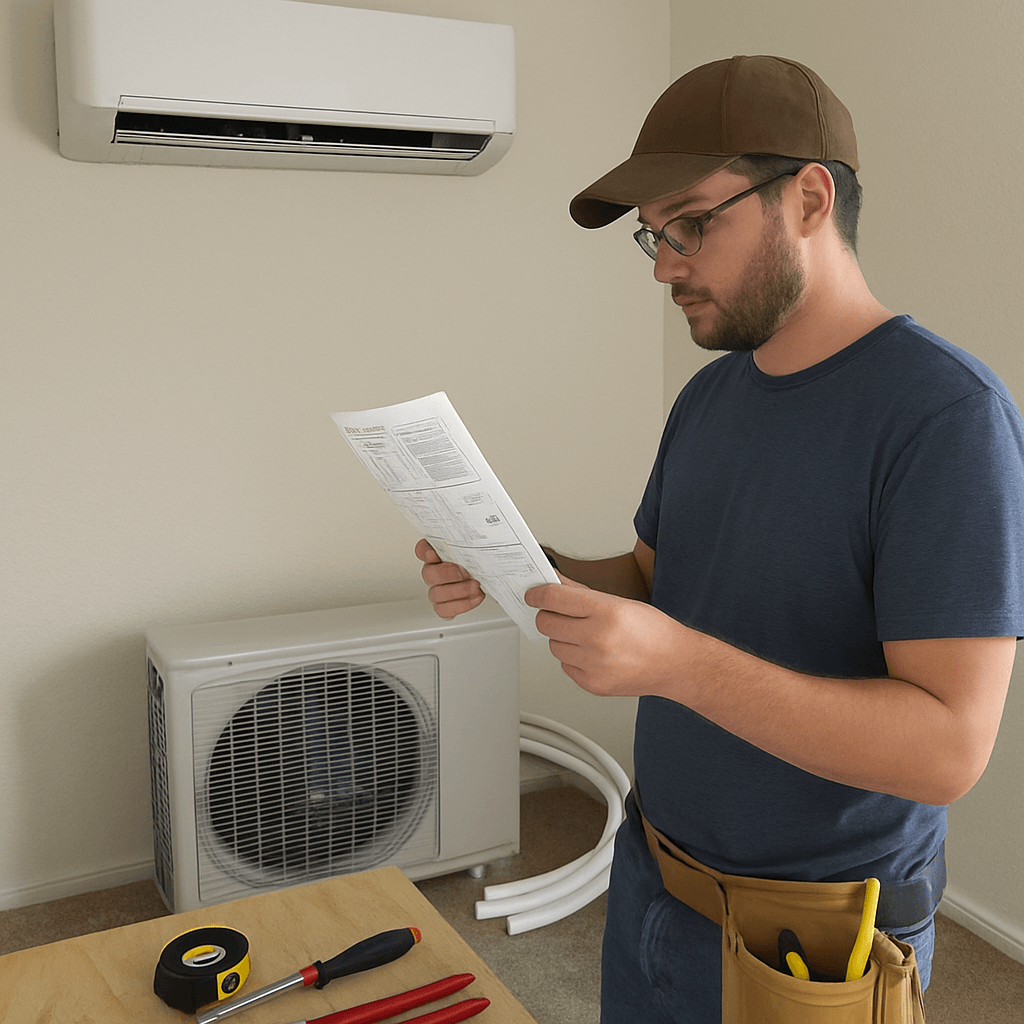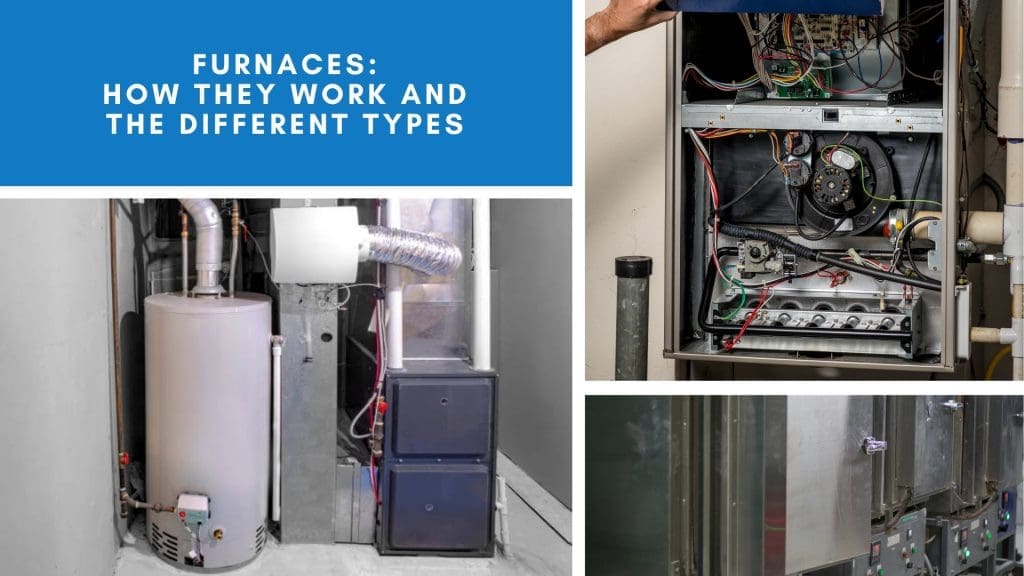Tackling a DIY mini split project can be both exciting and daunting. Many homeowners in California are drawn to the idea of installing their own systems. The appeal lies in the potential cost savings and the satisfaction of a job well done.
However, without proper guidance, mistakes in mini split projects are common and can lead to inefficiencies or even damage. Understanding these pitfalls is crucial for a successful installation.
Proper sizing and placement are key factors. They ensure your system runs efficiently and provides the comfort you expect. Skipping steps or ignoring manufacturer instructions can void warranties and lead to costly repairs.
Safety is another major concern. Electrical errors can pose serious risks. It’s important to know when to seek professional help.
In this guide, we’ll explore common mistakes and how to avoid them. Our goal is to empower you with the knowledge needed for a smooth DIY experience.

Why Homeowners Choose DIY Mini Split Systems
Many homeowners in California are opting for DIY mini split systems for several reasons. Cost savings are a major factor, as professional installations can be expensive. This makes a DIY approach appealing, providing significant budget relief.
Another reason is the flexibility of these systems. They are ideal for customizing comfort in different home zones. This adaptability makes them attractive for unique spaces and personal preferences.
Homeowners also enjoy the satisfaction of doing it themselves. Completing a project independently brings a sense of achievement. It also allows for a personalized touch in home improvements.
Common reasons for choosing DIY mini split systems:
- Cost-effectiveness: Saves money on labor.
- Customization: Tailors comfort to specific areas.
- Self-satisfaction: Accomplishing a personal project.
Yet, successful DIY installations require careful planning and execution. Understanding potential pitfalls helps in achieving a rewarding outcome.

The Most Common Mistakes in DIY Mini Split Projects
Undertaking DIY mini split projects can save money, but pitfalls abound. These projects often stumble due to lack of proper planning. Rushing into it without thorough research is a common misstep.
Failing to follow instructions meticulously is another typical error. Many homeowners skip crucial steps. Such oversight can lead to costly repairs later.
Additionally, ignoring local codes is a critical mistake. Compliance ensures safety and maintains system integrity. Understanding these traps is vital for a successful DIY journey.
1. Incorrect Sizing: Why Bigger (or Smaller) Isn’t Better
Choosing the right size for your mini split system is crucial. Many DIY enthusiasts pick the wrong capacity, thinking bigger is better. However, an oversized unit can lead to inefficiency.
An oversized system cools or heats too quickly, cycling on and off frequently. This not only wastes energy but also reduces lifespan. Conversely, an undersized unit struggles to meet demands, impacting comfort.
Before purchasing, assess your space’s size and layout. Consulting a professional or using online calculators helps in determining the correct capacity.
Key considerations for proper sizing:
- Room Size: Measure the area accurately.
- Insulation Quality: Check for adequate insulation.
- Window Exposure: Consider sunlight and window size.
Correct sizing ensures optimal performance and energy efficiency.
2. Poor Placement of Indoor and Outdoor Units
Placement of mini split units can greatly affect their efficiency. Many DIYers install units in suboptimal locations. This mistake can reduce performance and increase energy bills.
Indoor units should be placed away from heat sources. Avoid installing them near appliances or direct sunlight. Outdoor units need proper airflow; crowded spaces should be avoided.
Ignoring these placement guidelines can lead to compromised system effectiveness. The ambient environment around each unit plays a crucial role in its operation.
Best placement practices:
- Indoor Units: Avoid direct sunlight; place centrally.
- Outdoor Units: Ensure good airflow; avoid enclosed areas.
- Mounting Height: Install at appropriate height for effective coverage.
Mindful placement enhances system efficiency and longevity.
3. Skipping Proper Insulation and Sealing
Proper insulation and sealing are critical in DIY mini split installations. Skipping this step can lead to energy loss and system inefficiency. Many homeowners overlook the importance of well-insulated pipes and connections.
Leaky connections make systems work harder to maintain temperatures. This leads to increased energy consumption and higher bills. Ensuring all components are properly insulated prevents these issues.
Insulation and sealing essentials:
- Pipe Insulation: Wrap pipes thoroughly to prevent temperature loss.
- Sealing Gaps: Check for and seal any gaps around units.
- Quality Material: Use high-grade insulation materials for durability.
Effective insulation maximizes performance and savings.
4. Electrical Mistakes That Can Cost You
Electrical errors are one of the costliest mistakes in DIY mini split projects. They can damage your system or pose safety risks. Incorrect wiring or inadequate circuit connections are common slip-ups.
Many DIYers lack comprehensive electrical knowledge. Hiring an electrician for guidance ensures safety and compliance. Following the manufacturer’s wiring diagrams and specifications is crucial.
Common electrical pitfalls to avoid:
- Overloading Circuits: Ensure dedicated circuits for units.
- Incorrect Wiring: Follow diagrams closely.
- Safety Checks: Always verify connections before powering up.
Electrical diligence prevents hazards and system failure.
5. Not Following Manufacturer Instructions or Local Codes
Neglecting manufacturer instructions and local building codes can lead to major issues. These guidelines exist to ensure system performance and safety. Skipping these can void warranties and cause costly repairs.
Adhering to these instructions guarantees the system operates as intended. Local codes also ensure safety and compliance with standards. Consulting local regulations before beginning a project is wise.
Tips for following guidelines:
- Read Manual Thoroughly: Understand every step and requirement.
- Check Local Codes: Verify compliance with local standards.
- Document Steps: Keep records of installation for future reference.
Compliance avoids legal issues and ensures functionality.
6. Improper Drainage and Water Management
Improper drainage can result in water damage and system inefficiency. Many homeowners neglect to plan for adequate water removal. Clogged or incorrectly sloped lines can cause leaks and mold growth.
Planning for proper drainage prevents these issues. Ensuring lines are clear and correctly angled is essential. Routine checks can avert potential water-related damages.
Best practices for water management:
- Slope Drain Lines: Ensure proper angles for flow.
- Check for Blockages: Regularly inspect and clear lines.
- Install Drain Pumps: Use pumps if gravity drainage is insufficient.
Effective drainage maintains system health and home integrity.
7. Failing to Check for Refrigerant Leaks
Refrigerant leaks are a common yet preventable issue in DIY installations. Leaks can cause efficiency loss and environmental harm. Many DIYers miss small leaks that grow over time.
Routine checks after installation can catch leaks early. Specialized leak detectors are useful tools for this purpose. Ensuring tight connections minimizes the risk of leaks.
Steps to prevent refrigerant leaks:
- Inspect Connections: Tighten and check all joints post-installation.
- Use Detecting Equipment: Invest in a leak detector.
- Schedule Regular Checks: Perform consistent maintenance inspections.
Preventing leaks ensures optimal performance and ecological responsibility.
8. Rushing the Installation or Skipping Steps
In the rush to complete a project, many skip essential steps. Missing even small steps can lead to big problems later. Comprehensive and careful installation ensures system efficiency and longevity.
Rushing through installation affects component alignment and connections. Taking time to plan and execute each stage is vital. Following guides meticulously prevents costly rework.
Essential steps not to skip:
- Thorough Planning: Prepare each phase in detail.
- Follow Instructions: Adhere closely to installation guides.
- Double Check Work: Verify all steps before completion.
Patience and precision in installation yield better outcomes.
California-Specific Considerations for DIY Mini Split Projects
California’s climate presents unique challenges and opportunities for mini split installations. The state’s diverse weather, from hot desert areas to coastal cools, requires careful planning. System efficiency and size should match the specific needs of your locale.
Legal requirements in California can also influence DIY projects. Familiarize yourself with energy standards like Title 24. Compliance ensures both environmental responsibility and legal conformance.
For those near coastal areas, salt air can be corrosive. Consider corrosion-resistant materials for outdoor units. Regular maintenance checks can help in preventing damage due to weather exposure.
Key California-Specific Considerations:
- Climate Zones: Choose systems tailored for your region’s climate.
- Energy Codes: Ensure compliance with local energy legislation.
- Corrosion Resistance: Select materials suited for coastal environments.
Understanding these factors helps optimize system performance and longevity in California.
When to Call a Professional (and Why It’s Sometimes the Best DIY Move)
Tackling a mini split installation yourself can be rewarding. However, some situations warrant professional help. Recognizing when to call an expert can save time and money.
Complicated electrical work should never be underestimated. Mistakes can lead to system failure or safety risks. Licensed professionals have the skills to handle these technical challenges safely.
Sometimes, DIY projects hit a roadblock due to unforeseen issues. Whether it’s a leaking system or a placement error, experts provide solutions where you can’t. Their experience allows for swift problem-solving and ensures your system runs smoothly.
Instances to Consider Professional Help:
- Complex electrical wiring
- Issues with refrigerant charging
- Complications during installation
DIY efforts are commendable, but professionals offer peace of mind and guarantee quality work.
How to Plan and Prepare for a Successful DIY Mini Split Installation
Successful DIY mini split installations begin with thorough planning. Preparation minimizes errors and ensures a smooth process.
Start by selecting the right system for your space. Consider room size and cooling needs to avoid incorrect sizing, which could lead to inefficiency.
Research the best DIY mini split systems available. Look for units with clear instructions and good customer support. Choose a system suited for California’s climate.
Prepare a detailed installation plan before starting. Gather all necessary tools, and ensure you have the correct equipment. This prevents unnecessary delays during the installation.

Essential Preparation Steps:
- Measure your room to determine the correct BTU size.
- Read the manufacturer’s manual thoroughly.
- Gather all required tools and materials beforehand.
A well-prepared DIY project paves the way for a comfortable and efficient home environment.
Maintenance Tips to Keep Your Mini Split Running Smoothly
Regular maintenance extends the lifespan of your mini split system. It ensures consistent performance and efficiency.
Clean the filters every month. Dust and debris clogging can hinder airflow and reduce cooling effectiveness.
Inspect outdoor units for obstructions. Leaves and dirt can accumulate, affecting performance.
Key Maintenance Tips:
- Clean or replace filters monthly.
- Clear debris around outdoor units regularly.
- Schedule professional service annually for thorough checks.
Frequently Asked Questions About DIY Mini Split Systems
Is a DIY mini split system challenging to install?
It depends on your skills. Basic DIY knowledge helps, but complex tasks might require professional assistance.
How long does a typical DIY installation take?
Installation can take several hours to a full day, depending on experience and project complexity.
Are mini split systems energy efficient?
Yes, they often offer high energy efficiency compared to traditional HVAC systems.
Can I install a mini split in any room?
Installation is flexible, but room size and layout affect system performance.
Do mini splits require regular maintenance?
Yes, routine maintenance is essential for optimal performance and longevity.
What should I do if I encounter issues during installation?
Consult installation guides or contact a professional for support to avoid costly errors.
Conclusion: The Smartest Path to Comfort and Efficiency — Avoiding Mistakes in Mini Split Projects
Embarking on a DIY mini split project can be rewarding and cost-effective. By avoiding common pitfalls, you ensure your system runs smoothly and efficiently.
Remember, preparation is key. Invest time in understanding each step and when needed, seek expert advice. This ensures you make informed choices that benefit your home.
Ultimately, your home’s comfort and efficiency depend on the care you put into your project. With mindful planning, you can achieve lasting comfort with a DIY approach.


